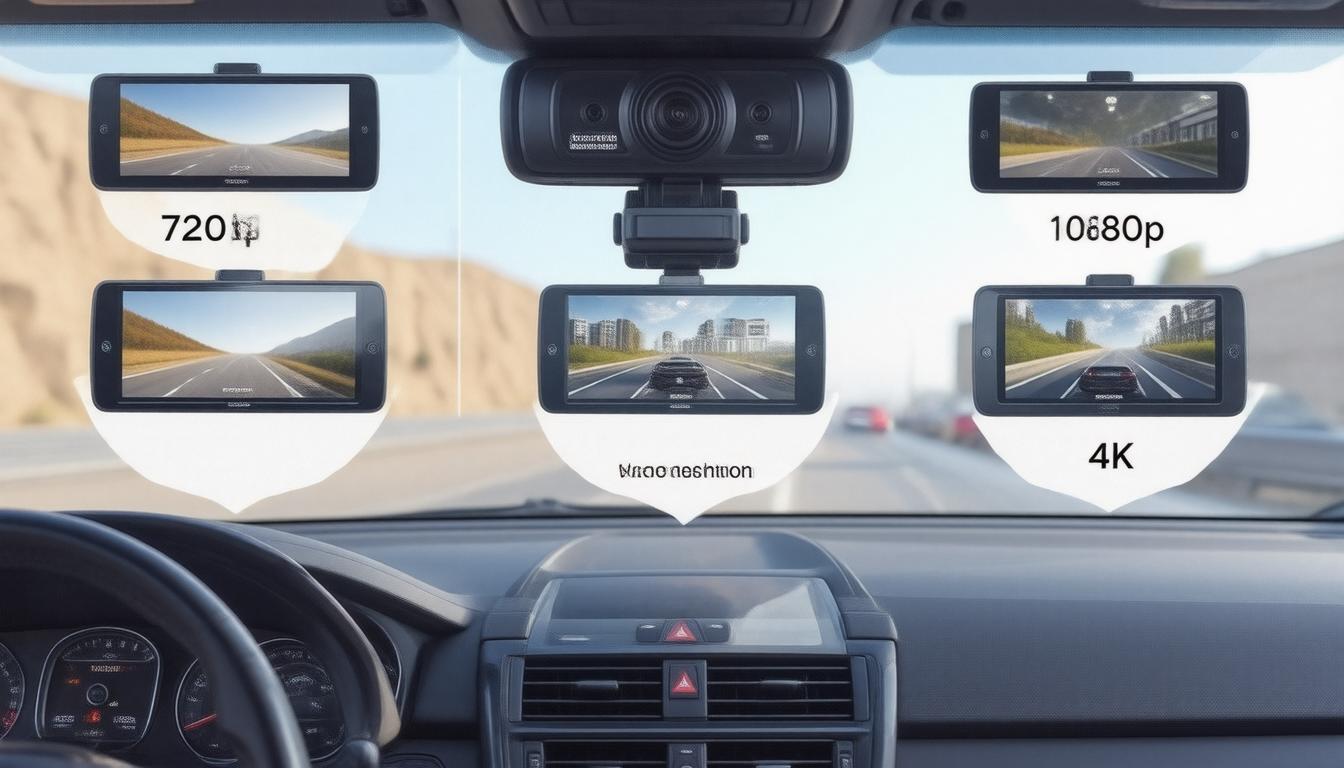When it comes to selecting a dashcam, one of the most important factors to consider is its video resolution. The right resolution ensures that footage is clear and useful for various purposes, from insurance claims to personal safety. In this article, we’ll explore video resolution options, why they matter, and how to choose the best one for your needs.
What is Video Resolution?
Video resolution refers to the detail an image holds and is often defined by the number of pixels used to display the image, organized in a width by height format. Higher pixel counts generally mean better image quality, with more pixels allowing for a clearer and sharper image. In simpler terms, higher resolutions contribute to better visibility of important details in your dashcam footage.
The Importance of Resolution
Why should you care about video resolution? The resolution affects not just the clarity of the footage but also its usability. For instance, in the event of an accident, detailed video evidence can be crucial for settling disputes. Therefore, choosing a dashcam with an appropriate resolution can make a significant difference in the quality of the captured video.
Common Video Resolutions
Here’s a breakdown of the standard video resolutions you might find when shopping for dashcams:
- Standard Definition (SD):
- Resolution: 480p (640 x 480 pixels)
- While this resolution captures basic footage, it may not provide enough detail for critical moments.
- High Definition (HD):
- Resolution: 720p (1280 x 720 pixels)
- A step up from SD, HD offers improved clarity, making it suitable for general use.
- Full High Definition (FHD):
- Resolution: 1080p (1920 x 1080 pixels)
- FHD is now considered a standard for many applications, including dashcams, providing a good balance between quality and file size.
- Quad High Definition (QHD):
- Resolution: 1440p (2560 x 1440 pixels)
- QHD offers even more detail, suitable for capturing finer details like license plates and road signs.
- 4K Ultra High Definition (UHD):
- Resolution: 2160p (3840 x 2160 pixels)
- 4K provides exceptional clarity, although it requires more storage space and processing power.
- 8K Ultra High Definition:
- Resolution: 4320p (7680 x 4320 pixels)
- Currently, this resolution is overkill for most dashcam applications, as storage and playback issues may arise.
Other Factors Influencing Video Quality
While resolution is crucial, other factors also affect the overall quality of dashcam footage:
- Frame Rate: This refers to how many frames are captured per second (fps). Common rates include 30fps and 60fps. A higher frame rate can make motion look smoother, which is particularly important for recording moving vehicles.
- Compression: Higher resolutions often lead to larger file sizes. Compression algorithms can reduce file size but may also affect image quality. Opt for a dashcam that maintains good quality even after compression.
- Aspect Ratio: Most dashcams use a widescreen 16:9 aspect ratio, which is standard for video playback on most devices. Understanding the aspect ratio helps ensure that your footage will be displayed correctly.
Choosing the Right Resolution
When selecting a dashcam, consider your needs:
- For daily driving and minimal recording needs, HD or FHD may suffice.
- For professional use or to capture intricate details, such as in insurance claims, consider QHD or UHD options.
It’s essential to balance the resolution with storage capabilities and data management practices, especially since higher resolutions require more extensive storage solutions.
Conclusion
Understanding video resolution options is crucial for selecting the best dashcam for your driving needs. With resolutions ranging from SD up to 8K, it’s essential to consider how much detail you need, the storage implications, and the intended use of the footage. By assessing these elements, you can make an informed decision that enhances your driving experience and ensures that you capture every important moment on the road.
Click here to see our opinion on the top 10 dashcams on Amazon

